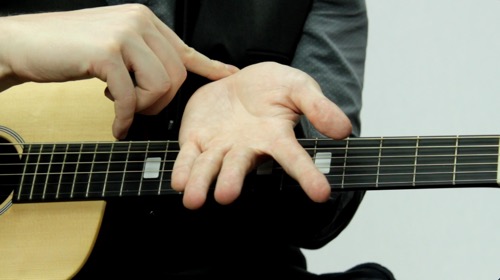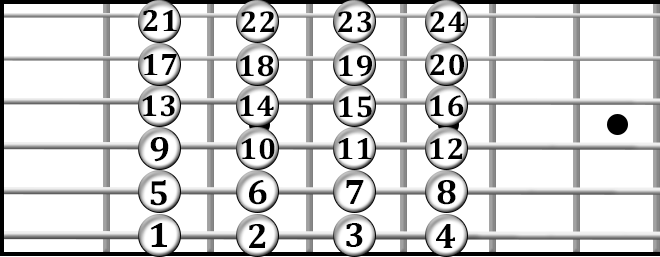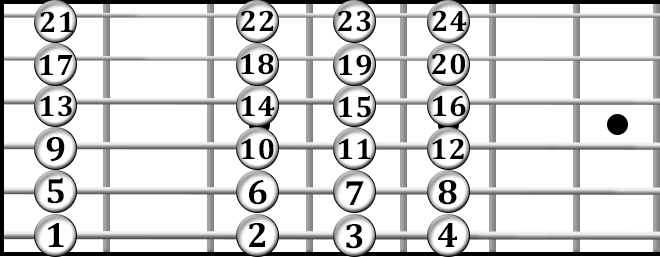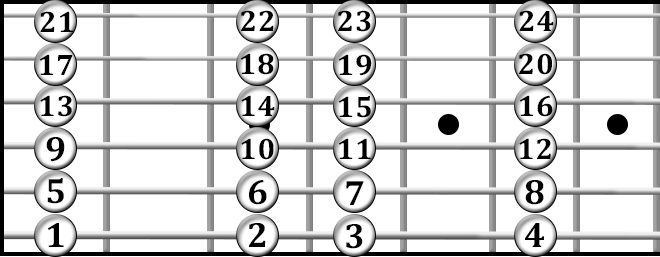Finger Independence for Better Dexterity

Hi, this is Hub Guitar.
There are a few indicators that suggest a need to build more finger independence.�
The first is if your fingers fly off the fretboard when you remove them from the frets. That suggests that they're working more as a single unit than as separate digits. So if your hands are doing those weird jumping around motion, pay attention to that.
The second is if moving one finger down to fret tends to pull all of the others down. Basically if you catch fingers moving when they are not supposed to be moving, than you might have a finger independence problem.
If you want to build a lot of dexterity, you've got to try to train your fingers to act separately.�
Fingers are actually wired together. The pinky and ring finger are wired via a nerve branch that goes this way through the wrist and the thumb and first finger are wired together and middle fingers are wired via another branch of what is basically the same nerve.�
You may notice that when you move fingers on of these branches, the others that on this branch tend to be affected. Or you may notice that there is some cross relationship where moving this branch tends to effect this branch. However you're wired as an individual, it pays to notice.
So you can tackle this technique issue by practicing slowly and deliberately. Look down at your hands and consciously tell them what to do. Watch them slowly do it.�
One great exercise to use is the typical alternate picking exercises, but this time with a focus on finger independence. When played this way, the exercise is sometimes nicknamed "the Spider." I'm going to show you how that works. That really helps. You keep your finger locked down, and you only let one move at a time. That helps you to control just one finger at a time.
You can also practice this in a floating way, where all fingers are supposed to float above the frets without being affected by each other.�
Practicing these exercises can help you improve your finger independence, contributing to better dexterity and overall control of the instrument.
In many situations, the fret-hand fingers need to be independent of each other. Without this independence, the movement of one finger will drag the others along as well.
For fingerstyleSometimes used to refer to a particular technique of playing with the fingers, but also often used as a general term for playing the guitar strings with the picking-hand fingers. guitar players, this is also true of the picking hand. But it’s more common to have a problem with the fretting hand.
Building finger independence is a great example of a practice-resistant problem. That’s because it has its root in biology (as we'll soon see) and it needs deliberate practice to be addressed. Unlike some problems that tend to go away over time, fingers moving together does not seem to be one of them.
Describing the Problem
It looks like this: you go to play a note on the guitar with one finger, and fingers that were not needed follow it. You then remove that finger, and fingers that were not involved in the movement seem to move as well.
Players often describe an uncontrollable feeling that their fingers are “flying up” off of the fretboard.
Causes of the Problem
To some extent, this problem is caused by biology. The ulnar nerve controls the motion of the fingers. And in your wrist, the ulnar nerve forks into two branches. One is the deep ulnar nerve, which controls the index finger and the middle finger. The other is called the superficial ulnar nerve, and it carries signals to the ring finger and pinky.
Perhaps it’s no use speculating why, but the fingers on the end of the hand controlled by the superficial ulnar nerve tend to have the most problems. There may be some basis in biology but it’s likely related to conditioning. We use our thumb, index and middle fingers more frequently than our ring and pinky fingers, and so they don’t tend to get as much of a workout over the course of our lives. That means when we pick up a guitar, we'll have a tendency to favor those first two and ignore the second two.
Understanding the Problem
Police your fingers
Without awareness of this, your fingers will never do anything differently. You can learn to play many passages and chords without addressing this problem. And the problem is subtle; rather than a wrong note, the result is an overall low level of dexterity. That can be hard to spot. For that reason, it’s more important for intermediate and above players to worry about. Like all technique advice, beginners should take note of it but carry on practicing. The burden of worrying about too many technical rules should not be allowed to interfere with your practice.
Go slow
You will not be able to address this problem without taking some specific passages and going over them very slowly. This problem demands a slow speed, patience, and constant attention.
Divide and conquer
This problem is best understood as being related to different systems controlling two different sets of fingers. Rather than worry about training each finger independently, start by making sure the index and middle fingers can work independently of the ring and pinky fingers.
Exercises to Solve the Problem
Four-finger exercise
Sometimes called “The Spider”, this exercise is pretty similar to alternate picking and advanced alternate picking exercises. Below is one example.

To build finger independence, the classic exercise should be “modified” by applying the following rules:
- Apply each finger to the note corresponding to its fret, but only move one finger at a time and do not move any other fingers until that finger has been placed and the note has been played.
- Play very slowly, carefully watching the fingers.
- Strictly monitor the fingers making sure that they do not spring up from the fretboard when it is not their turn.
- Try to relax your hand, wrist and fingers as tension can cause unwanted movement.
To expand upon this finger exercise, try these three variations. Be sure to hold your entire hand in the fixed position while each finger makes the stretch. Do not assist the stretching finger by changing the position of the hand.
- Move the left-most column of notes one fret further left. The notes marked as 1, 5, 9, 13, 17 and 21 will all be a stretch of the index finger. The rest stay where they are. Continue to observe the movement rules.
- Move the right-most column one fret. The notes marked 4, 8, 12, 16, 20, 24 will all stretch one note further to the right. The rest stay where they are. Continue to observe the movement rules.
- Stretch both the left and the right columns of notes one fret away from their original position. Take care to observe the rules of movement as before.
First-Finger Stretch

Pinky-Finger Stretch

Double Stretch

Trill exercises
Trills are another great way to build finger independence. If using trills to promote finger independence, it’s a good idea to try all possible combinations of two-finger trills.
See these links for more information.
Coda
The nerves controlling your fingers are hard-wired together, so it’s normal for fingers to fire off together.
With patient and deliberate practice, you can reduce the impact this has on your playing.
 As the creator of Hub Guitar, Grey has compiled hundreds of guitar lessons, written several books, and filmed hundreds of video lessons. He teaches private lessons in his Boston studio, as well as via video chat through TakeLessons.
As the creator of Hub Guitar, Grey has compiled hundreds of guitar lessons, written several books, and filmed hundreds of video lessons. He teaches private lessons in his Boston studio, as well as via video chat through TakeLessons.